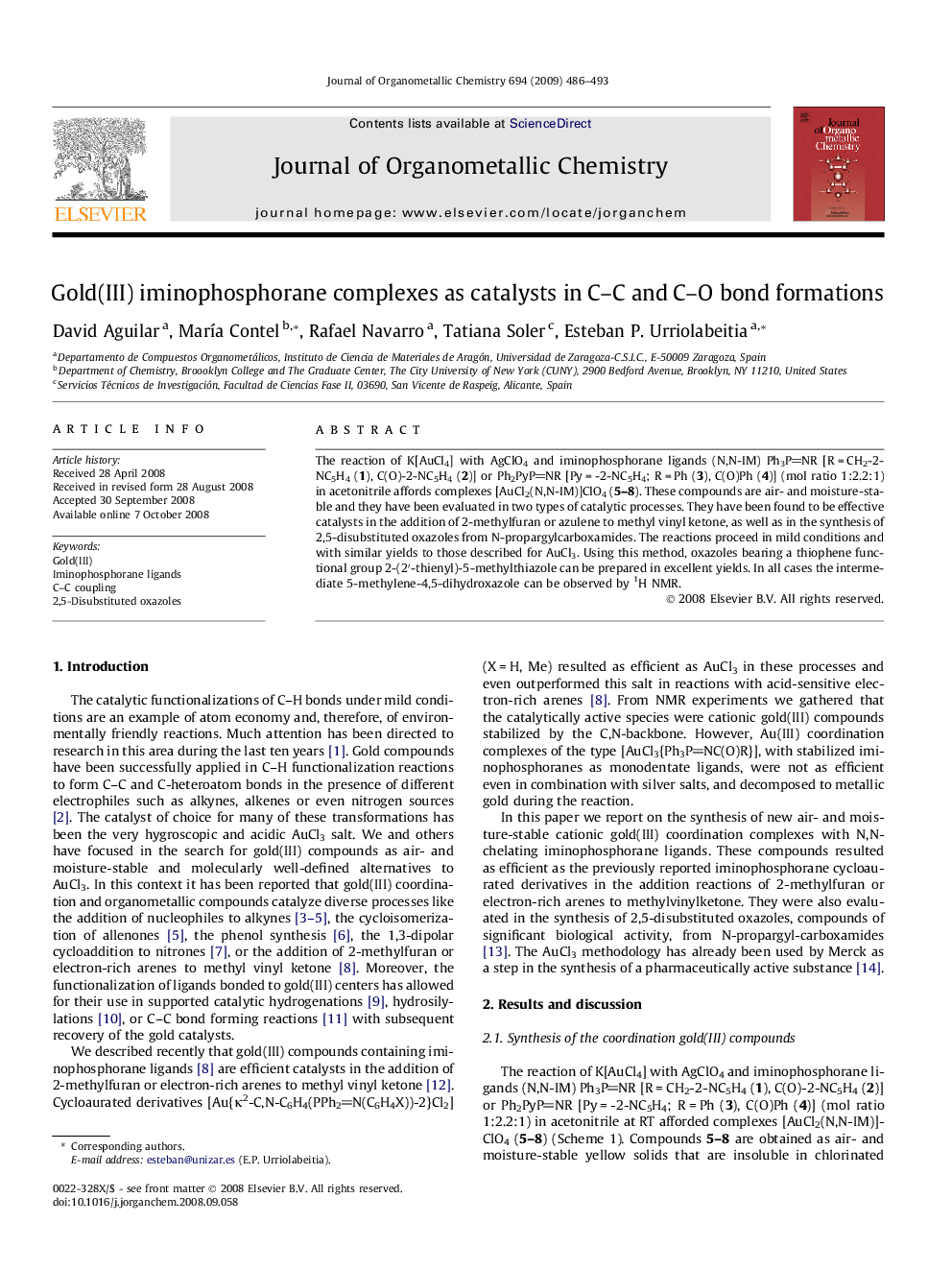| Article ID | Journal | Published Year | Pages | File Type |
|---|---|---|---|---|
| 1327619 | Journal of Organometallic Chemistry | 2009 | 8 Pages |
The reaction of K[AuCl4] with AgClO4 and iminophosphorane ligands (N,N-IM) Ph3PNR [R = CH2-2-NC5H4 (1), C(O)-2-NC5H4 (2)] or Ph2PyPNR [Py = -2-NC5H4; R = Ph (3), C(O)Ph (4)] (mol ratio 1:2.2:1) in acetonitrile affords complexes [AuCl2(N,N-IM)]ClO4 (5–8). These compounds are air- and moisture-stable and they have been evaluated in two types of catalytic processes. They have been found to be effective catalysts in the addition of 2-methylfuran or azulene to methyl vinyl ketone, as well as in the synthesis of 2,5-disubstituted oxazoles from N-propargylcarboxamides. The reactions proceed in mild conditions and with similar yields to those described for AuCl3. Using this method, oxazoles bearing a thiophene functional group 2-(2′-thienyl)-5-methylthiazole can be prepared in excellent yields. In all cases the intermediate 5-methylene-4,5-dihydroxazole can be observed by 1H NMR.
Graphical abstractThe synthesis of gold complexes [AuCl2(N,N-IM)]ClO4 [N, N-IM = Ph3PNCH2NC5H4 (5), Ph3PNC(O)NC5H4 (6), Ph2PyPNPh (7) and Ph2PyPNC(O)Ph (8)], and the X-ray structure of (8) is reported. Complexes 5–8 catalyze the addition reactions of 2-methylfuran and azulene to methyl vinyl ketone, and also the synthesis of 2,5-disubstituted oxazoles from N-propargylcarboxamides.Figure optionsDownload full-size imageDownload as PowerPoint slide
